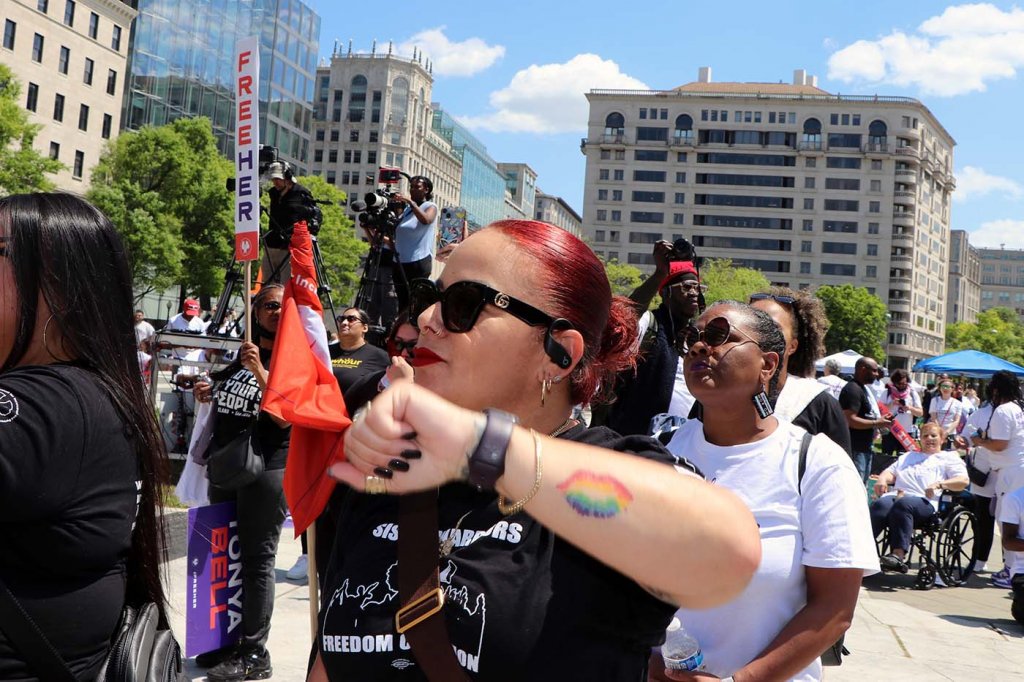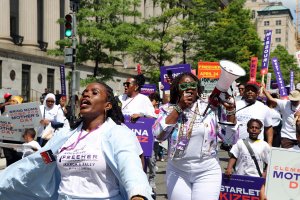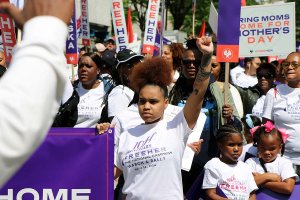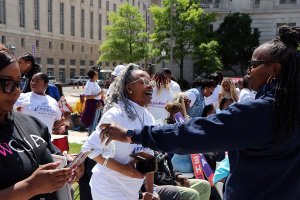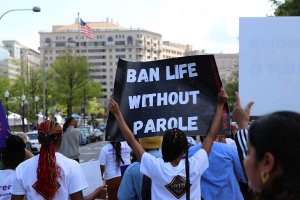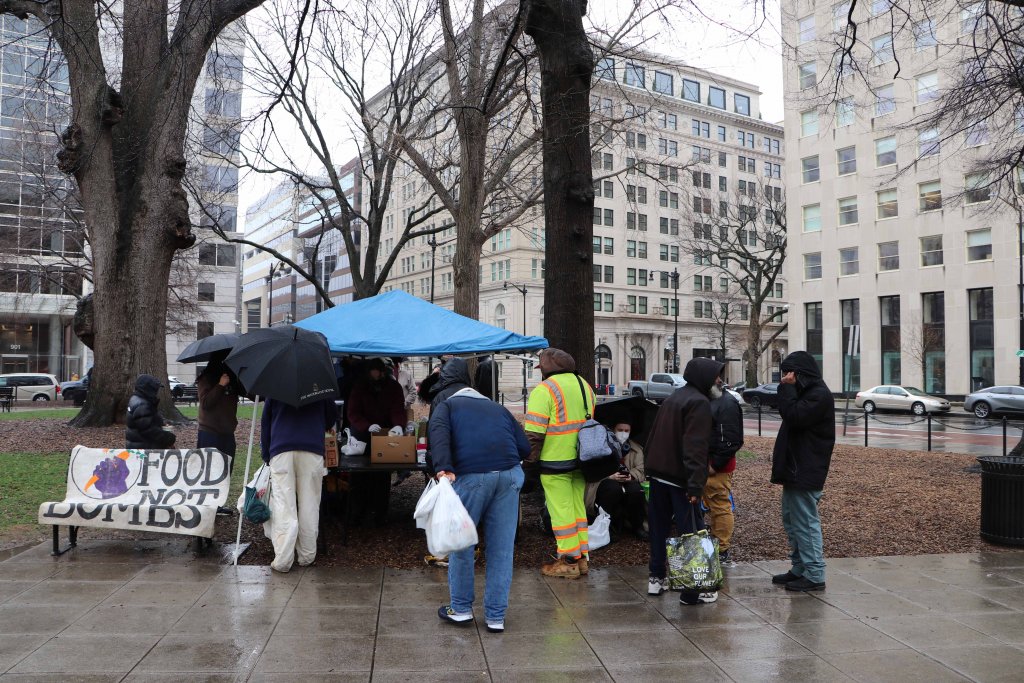Latest in Living News
Get up-to-date everyday life news from our reporters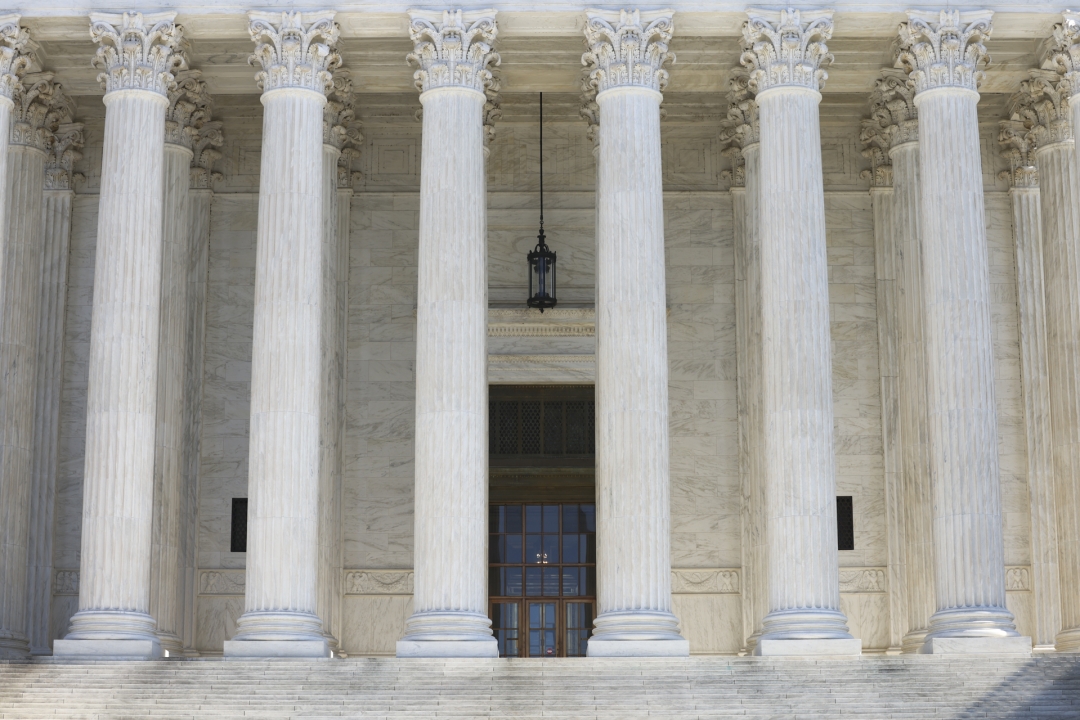
Supreme Court hears arguments over Mexico’s suit against U.S. gunmakers
The case will decide whether the firearm industry’s sale of firearms is a proximate cause of harm to Mexico.
read more
Photo Essay: New Orleans spirit comes to Washington at eighth annual Mardi Gras celebration
Local businesses, organizations and attendees celebrated Mardi Gras at The Wharf D.C. on Saturday.
read more
Watch: The Great American Water Taste Test brings friendly competition to Capitol Hill
Members of the NRWA spent the week lobbying their Congresspeople, culminating in a taste test of water samples from their home states.
read more
Watch: The 17th Annual Lincoln Oratory Festival Brings History to Life
Ford’s Theatre event encourages local students to perform on a historic stage.
read more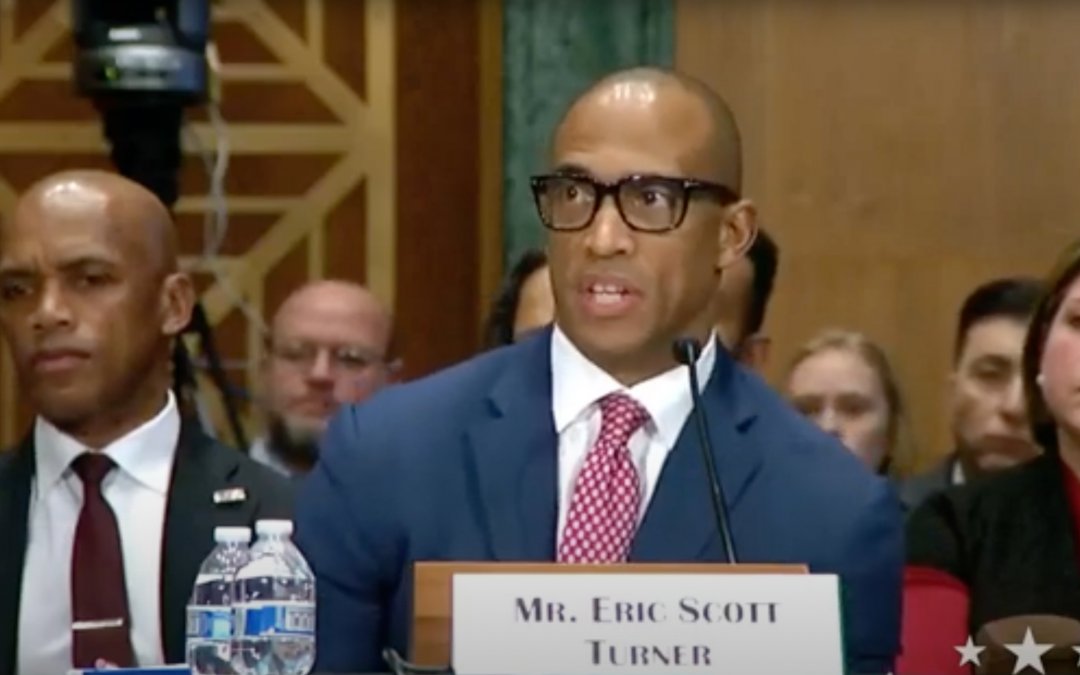
Watch: Housing secretary nominee testifies at Senate hearing
Eric Scott Turner is President Trump’s latest cabinet pick headed for a full Senate vote.
read moreBiden pardons ‘Peach’ and ‘Blossom’ ahead of Thanksgiving
WASHINGTON — President Biden pardoned turkeys Peach and Blossom on Monday, officially freeing them to live out lives of comfort and luxury in Minnesota, instead of ending up on a dinner table this Thanksgiving.
Biden made the pardon on the South Lawn with the help of John Zimmerman, chairman of the National Turkey Federation, and Zimmerman’s 9-year-old son Grant.
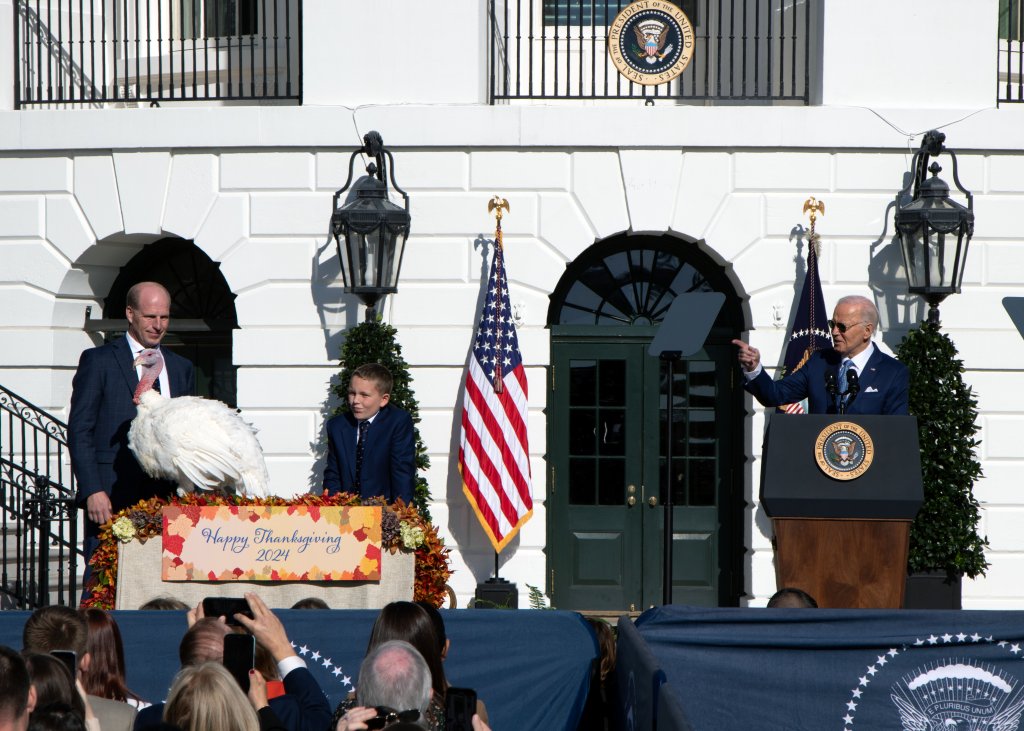
Biden points at Peach. (Sarah Lin/MNS)
The two turkeys are named after the Delaware state flower, the peach blossom. Biden served as the Senator from Delaware for over 35 years before becoming vice president in 2009.
Continuing a White House tradition started by the Truman presidency in 1947, Biden also gave thanks in true Thanksgiving fashion.
“It’s my last time to speak here as your president during this season and give thanks and gratitude,” Biden said. “Let me say to you, it’s been the honor of my life. I’m forever grateful.”
Photos: Embassy Row’s fashionable trick-or-treaters
WASHINGTON — Embassy Row opened its doors to candy-seeking trick-or-treaters on Thursday as children of all ages celebrated Halloween.
While some embassies, such as Indonesia’s, offered imported candies from their country, others opted for more common American staples, placing Snickers, Twix and Tootsie Rolls in baskets.
Amanda Lee took her 8-month-old daughter Harper to trick-or-treat at the embassies.
“We were looking for daytime activities and culturally unique things to do,” Lee said.
Beyond parents and young children, many college students also participated in the Halloween tradition.
Sophie Carr, a senior at Georgetown University, said she discovered which embassies were open for trick-or-treating through a Washingtonian magazine article.
“We always wanted to do embassy trick-or-treating, but it’s hard since we have class during the day,” Carr said.
This year, Carr and a friend decided to skip class and celebrate Halloween by picking candy up on Massachusetts Avenue.
“It’s our last year in D.C. and we wanted to make memories,” she said.

“Enter if you dare,” reads a sign hung on the Embassy of Indonesia’s fence. (Sarah Lin/MNS)

Trick-or-treaters climb the steps of the Embassy of Greece. (Sarah Lin/MNS)
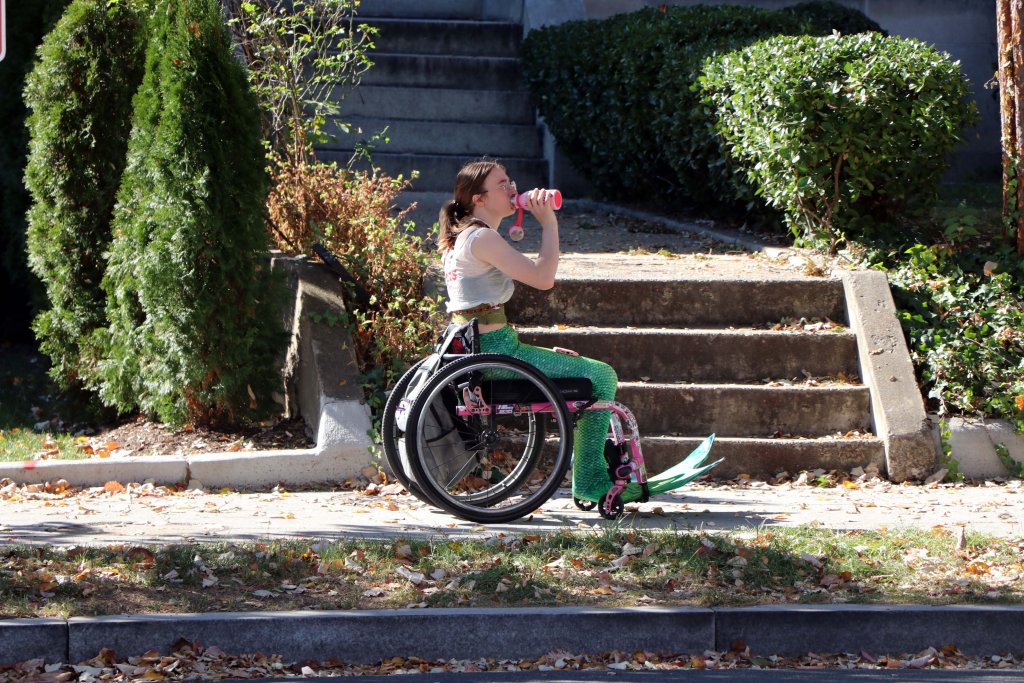
A trick-or-treater takes a water break while walking up Embassy Row. (Sarah Lin/MNS)

Two trick-or-treaters walk up Embassy Row. (Sarah Lin/MNS)

A trick-or-treater dressed as The Lorax. (Sarah Lin/MNS)

Three trick-or-treaters walk past the Embassy of Turkey. (Sarah Lin/MNS)

A trick-or-treater dressed as an astronaut checks their phone. (Sarah Lin/MNS)

A trick-or-treater enters the Embassy of the Republic of Haiti. (Sarah Lin/MNS)

A trick-or-treating duo walks up Embassy Row. (Sarah Lin/MNS)
DC Residents Highlight Strengths and Shortcomings of Housing Authority Restructuring
WASHINGTON — Residents and prospective tenants appeared appreciative of new leadership, but eager to see more change at the first District of Columbia Housing Authority public oversight roundtable on Tuesday, which saw benefit recipients directly address the councilmembers overseeing the fraught government agency.
“[DCHA’s new director] Keith Pettigrew is our black panther,” voucher recipient Rhonda Hamilton said. “He knows and is experienced in how to manage a housing authority.”
This hearing was part of the authority’s three-year plan to restructure and increase transparency in the agency after a 2023 controversy involving overpaying landlords alongside an uptick in housing insecurity in Washington.
Residents currently receiving housing assistance raised concerns that the restructuring of the DCHA organizing board only maintains one seat for local representation, while previous boards had multiple neighborhood seats.
“We want our other residents to have a vote,” Christine Spencer, a DCHA housing recipient, said. She added though that she does appreciate that she can “walk out the door and see [DCHA community] events in your neighborhood…it’s refreshing.”
Councilmember Zachary Parker (Ward 5) agreed with the need for representation. “It feels like there’s a firewall between tenants and DCHA employees,” he said.
A 2023 Washington Post investigation revealed that the DCHA, which is an independent agency of the DC government, incorrectly overpaid rent for more than 15,000 households, totaling over one million dollars per month. The investigation also reported that many units provided for by the authority lacked adequate facilities, such as electricity and accessible entrances. This led to a turnover in management.
DCHA’s new leadership said they will need time to address these critical issues and point to the three-year plan, which involves more considerable structural changes to the authority’s operation, including better landlord oversight.
Residents also worried about problems that the DCHA takes too long to address.
“The biggest problem I think is a breakdown in communication,” Ronald Smith, who received his voucher after twenty years on the waitlist and requires extra room for his medical equipment, said. “My voucher is only for a one bedroom unit. The space [my wife and I] live in now is deplorable. I don’t know what to do, I need to leave this place but I can’t fit in a one-bedroom.”
The plan, which would be carried out through 2027, would also provide more resources to the Office of Customer Engagement, aimed at boosting assistance and support for residents in need.
“Whenever there’s a new administration and communication changes…it feels like I’m starting over,” Linda Brown said, a resident who worries these organizational changes will make her home unaffordable. “I just don’t feel represented.”
Despite these issues, local elected officials generally approved of the new leadership.
“Since Keith Pettigrew took over the agency has taken big strides,” Housing Committee chair Robert C. White (At-Large) said. “It’s about creating a foundation for lasting improvement. That’s what residents want and deserve.”
VIDEO: Take Steps 2024 raises $200K for IBD Support and Research
WASHINGTON — The Crohn’s and Colitis Foundation hosted Take Steps 2024 on Saturday, drawing the largest crowd in years, according to organizers. Individuals diagnosed with inflammatory bowel disease (IBD), their caregivers and healthcare professionals gathered to celebrate the latest fundraising achievements.
“We’ve actually hit our goal of $200,000 this morning,” said Marissa Spratley, the fundraising manager of the foundation.
Donations will fund groundbreaking research, better treatments and programs aimed at improving the quality of life for those living with IBD.
WATCH THE VIDEO STORY HERE:
FreeHer protesters call on Biden to ‘Bring Moms Home’ from prisons and jails
WASHINGTON — “Bring Moms Home for Mother’s Day,” called protesters at the 10th Anniversary FreeHer March and Rally on Wednesday.
Organized by The National Council for Incarcerated and Formerly Incarcerated Women and Girls, the peaceful protest emphasized that this Mother’s Day, nearly 150,000 incarcerated mothers will not be able to celebrate, separated from their children. Many of the mothers are awaiting trial in jail, unable to pay the bail that in some cases might be equal to their annual income. The rally participants called on President Joe Biden’s administration and state governors to take urgent action.
“With a stroke of a pen, they can unite families,” said Ebony McMorris, a White House Correspondent at American Urban Radio Networks.
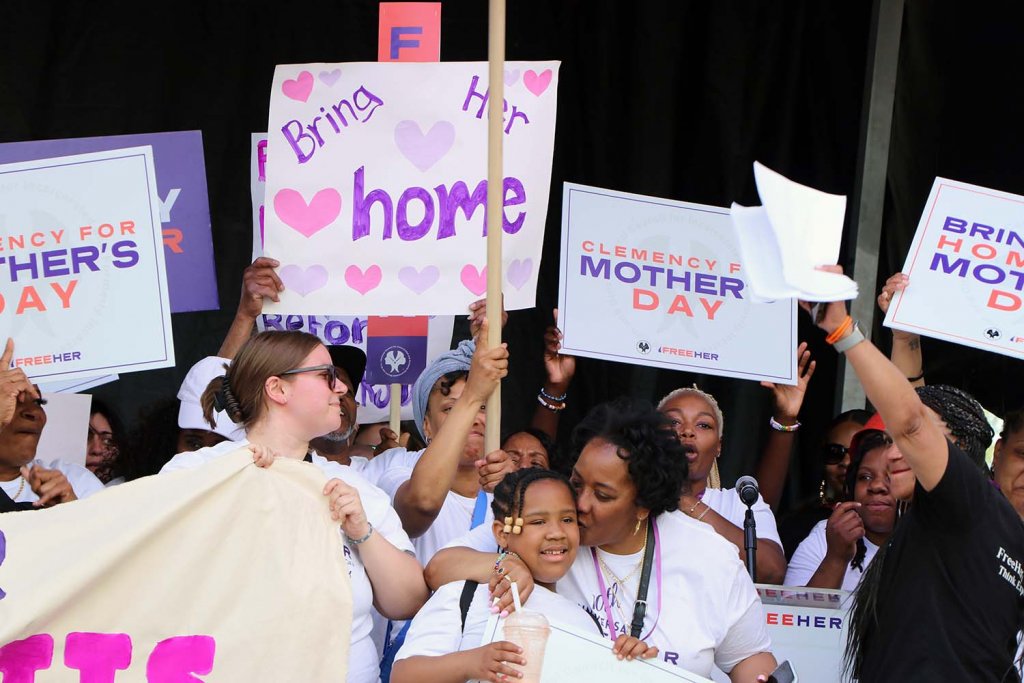
Protesters from Massachusetts hold signs at the FreeHer March and Rally in Washington on April 24, 2024. (Sophia Didinova/MEDILL NEWS SERVICE)
The Council members pinned their hopes on Biden’s presidency, whom they met as a Vice President of former President Barack Obama. Andrea James, Founder & Executive Director of the Council, remembered talking to President Obama in 2014.
“We said, Mr. President, as you’re going into the federal prisons, please remember that women are incarcerated too. They are mothers, grandmothers, sisters, aunts, wives, and we need them to come home,” she recalled.
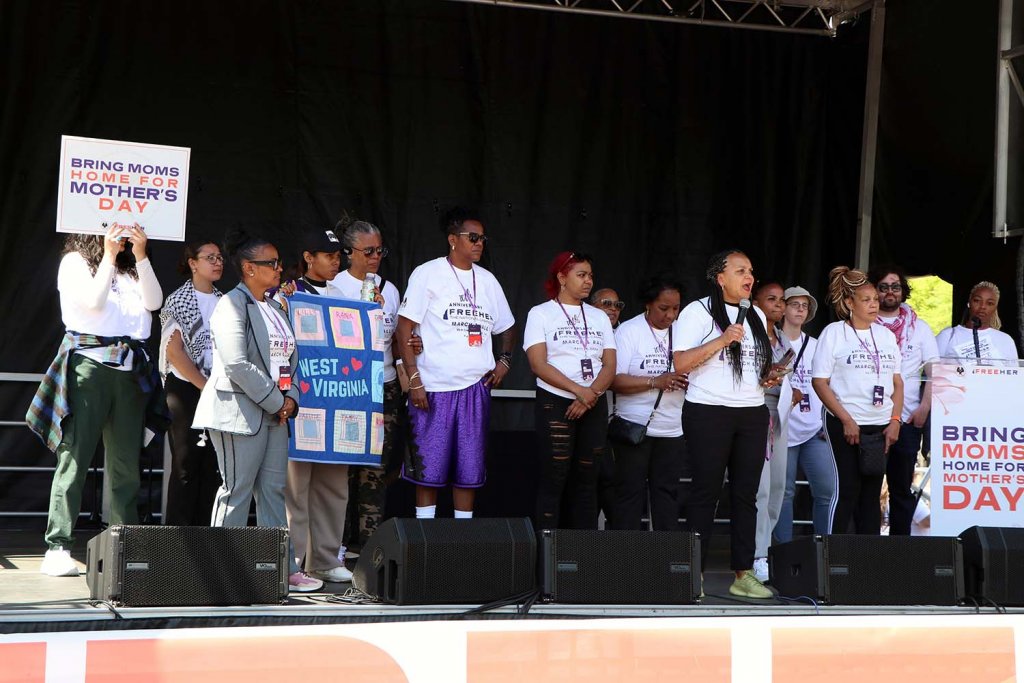
Andrea James (with the microphone) addresses protesters from the stage on April 24, 2024. (Sophia Didinova/MEDILL NEWS SERVICE)
President Obama granted clemency 1,927 times over eight years in office, the highest total of any president since the 1950s.
President Biden, however, needs to be more proactive, according to The Council. He granted clemency to 16 individuals the day of the protest, but James believes it is insufficient.
“Guess what President Biden gave us?” she pointed out his latest clemency acts. “I guess all the White House heard us say was that we wanted just a little bit of freedom.”
“We want it all,” some in the audience screamed back.
The Council speakers, along with national allies and organizations, emphasized the case of Michelle West, who they believe tops the list for urgent clemency.
West was charged and convicted in a drug conspiracy case that held her responsible for the actions of her co-conspirators in 1994. The Judge imposed a life sentence plus 50 years, plus five years probation for a first-time offender.
“When I last wrote about Michelle’s case, I was hoping that it added to the efforts… to correct a wrong that had been done,” Walter Pavlo, an expert on federal criminal law enforcement, wrote for Forbes in 2021.
Yet West’s clemency was rejected in 2015, and no action has been taken since. The recent closing of the FCI Dublin prison further exacerbated West’s situation, as she is being moved around other prison facilities without knowing her final destination.
“My mom is not a slave, and it feels like slavery at this point,” said Miquelle West, Michelle West’s only daughter.
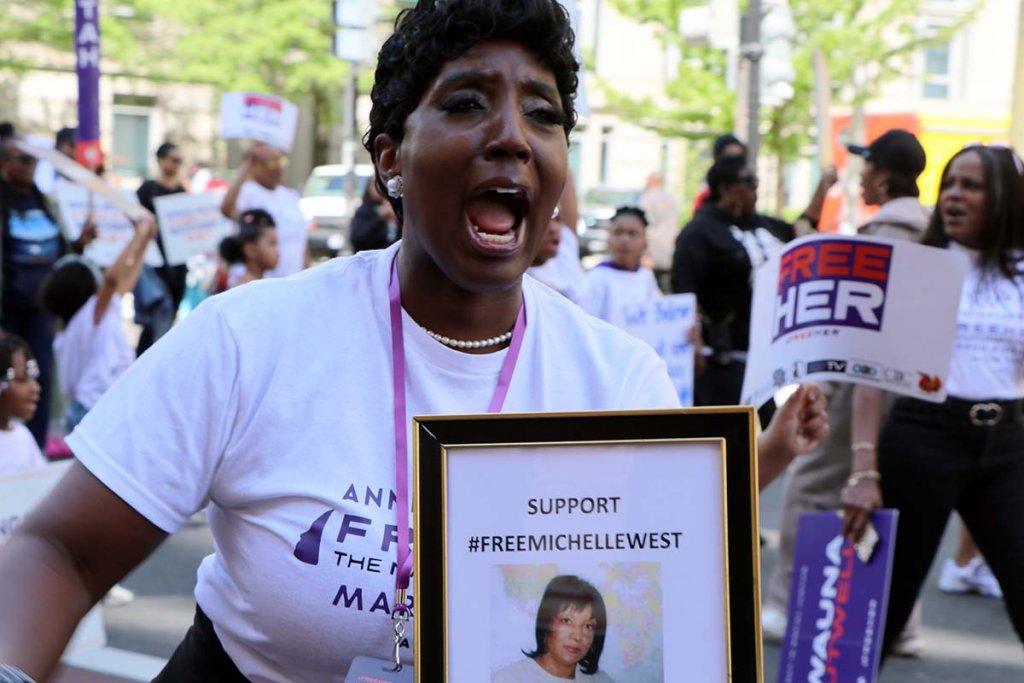
Tiawana Brown, Founder of Beauty after the Bars, calls for clemency for Michelle West during FreeHer March on April 24, 2024. (Sophia Didinova/MEDILL NEWS SERVICE)
Children of incarcerated and formerly incarcerated mothers were leading the march, calling to have their families united. On the other side, many formerly incarcerated women came to fight to have their children back.
Fifty-eight percent of imprisoned women in state prisons have a child under the age of 18, and often, the mothers are separated from their children for the first time upon entering prison.
“FreeHer to me also means free my kids,” said Kimberly Dunne, Co-National Organizer at the Formerly Incarcerated & Convicted People and Families Movement. “I lost my kids to incarceration, and my kids are still abandoned, as I say, by adoption. FreeHer is extended to my kids because they are still not free.”
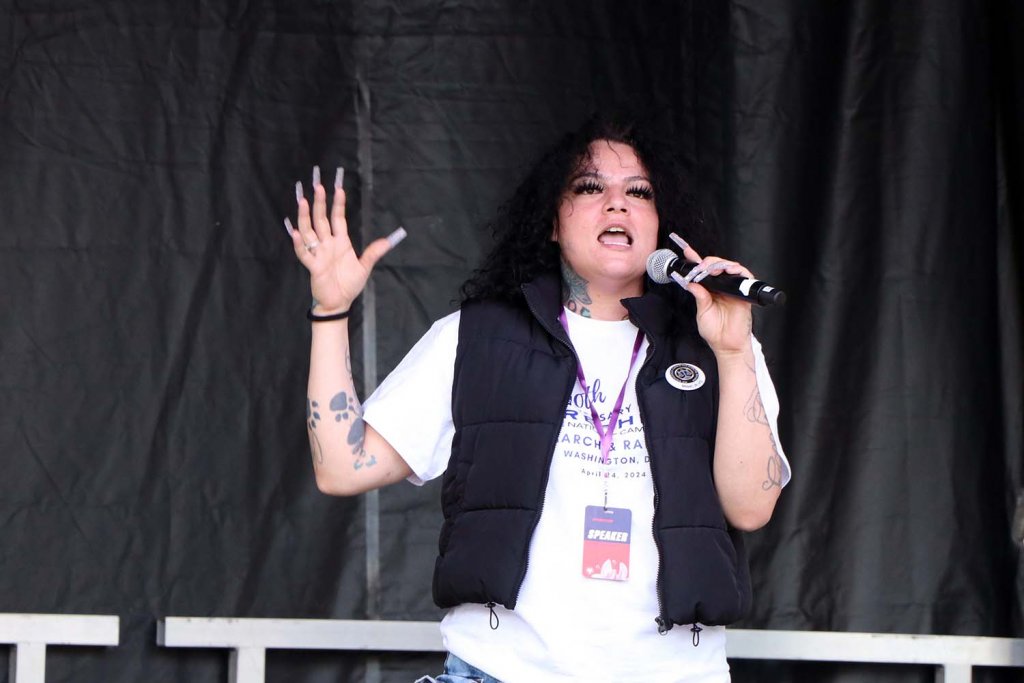
Kimberly Dunne talks about her children on the stage. April 24, 2024. (Sophia Didinova/MEDILL NEWS SERVICE)
As Mother’s Day approaches, fractured families, missing mothers and the risk they impose on children’s futures are at the forefront of this primarily black community of activists. Amanda Wilders is among the organizers of the Black Mothers March on the White House, which is planned for May 12.
“We know this day is not a happy day for many mothers,” she said. “We understand that this state is the problem, and we all have a common enemy: the United States government.”
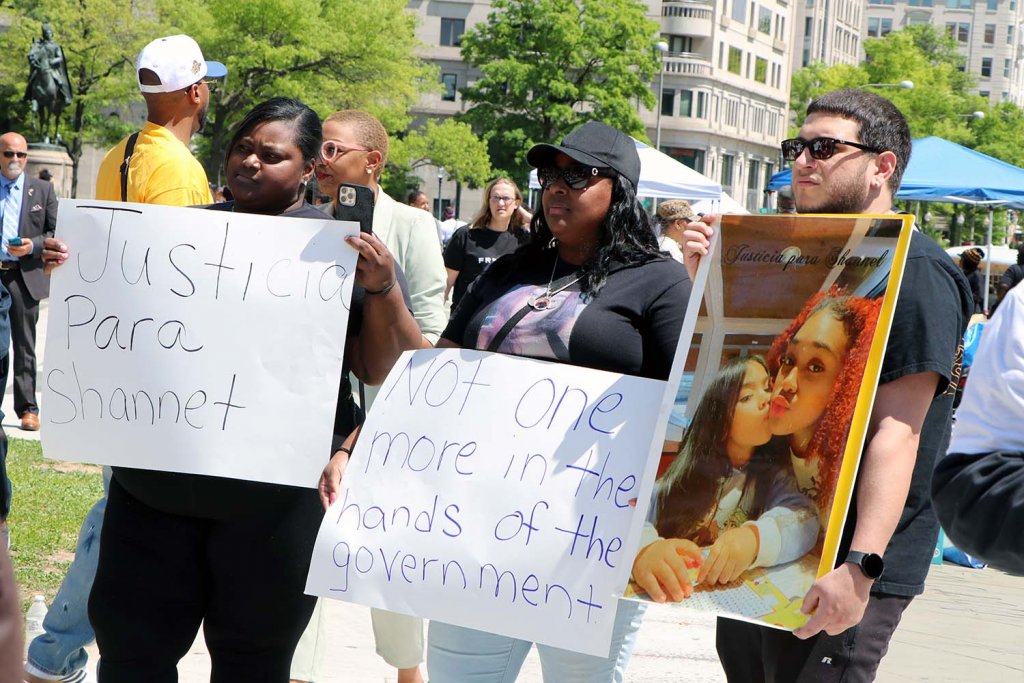
FreeHer protesters display their mistrust in the government with banners. April 24, 2024. (Sophia Didinova/MEDILL NEWS SERVICE)
“The problem is that this country has gone on not caring, not liberating, and has been putting prison over our community,” said McMorris, and many protesters loudly agreed with her.
The Council, among other participant organizations, believes the incarceration system harms society, as long prison sentences do not deter crime but destroy lives. Instead, the Council advocates that tax dollars should be put into providing resources to at-risk families and communities, including initiatives like affordable housing, post-incarceration employment, and reinstating voting rights.
“Clemency, commutation, sentencing reform – those are the meantime solutions,” said Shekhinah Braveheart, Advocacy Associate at the Justice Policy Institute. “But the end goal is to end this system that has fractured our families, exacerbated trauma, destabilized our community and rehabilitated no one.”
View more photos from the April 24, 2024, 10th Anniversary FreeHer March and Rally:
In Photo: Anti-war group distributes free vegan food to combat poverty, hunger
WASHINGTON – The Washington chapter of Food Not Bombs, a volunteer group that gives out free vegan meals to combat poverty and hunger, distributed meals on Saturday, undeterred by persistent rain.
D.C. is one of over 1,000 cities in 65 countries served by Food Not Bombs, according to its website. The first of the autonomous, non-hierarchical chapters was founded by anti-nuclear activists in 1980 in Cambridge, Mass.
Will Reid, a leading member of the D.C. branch, said he often ate from Food Not Bombs in Houston, Texas when it provided food for the Occupy movement, an international movement in the early 2010s that advocated for socio-economic justice.
Reid started volunteering for Food Not Bombs in 2014 when he moved to Washington. He now devotes around nine hours to the group each week, and he “can’t stop thinking about it.”
“The vast majority of friendships that I have in D.C. I can somehow trace back to Food Not Bombs,” Reid said.
The group dishes out food donated by local businesses that otherwise would have been thrown away.
In addition to reducing food waste, another of the group’s guiding tenets is nonviolence. The D.C. chapter has provided food for multiple Gaza ceasefire protests.
The group distributes only vegan options to avoid food safety issues, serve individuals who do not eat animal products, oppose violence in the animal industry and provide nutritious options.
It serves around 25 to 75 people each week in the winter, and around 75 to 150 people in the summer, Reid estimated.
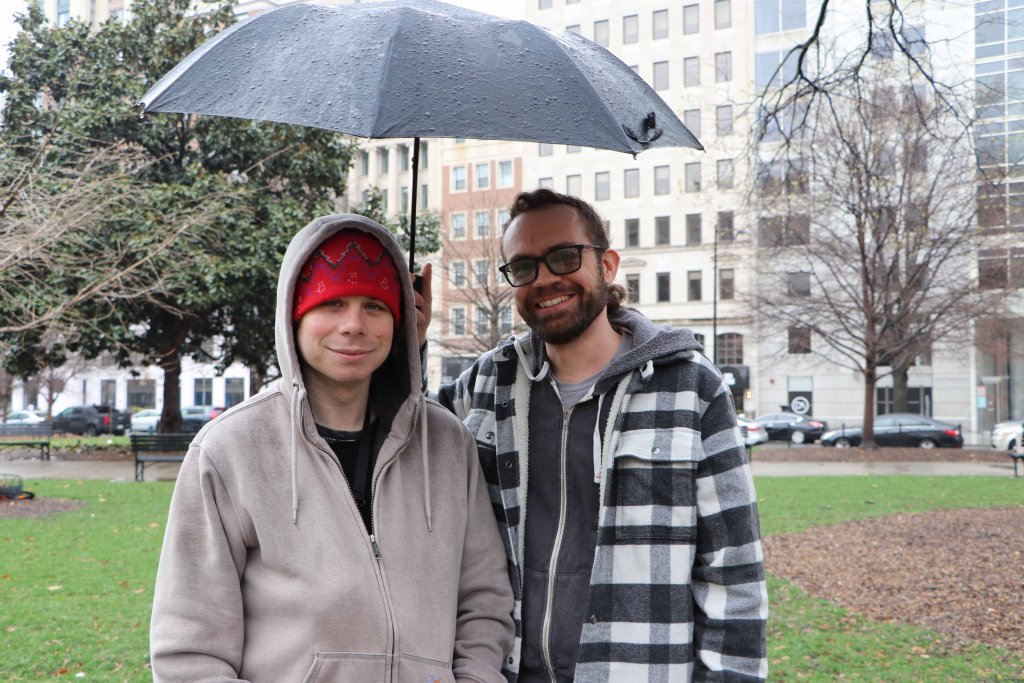
Volunteers Will Reid (right) and Jason (left) share an umbrella in the rain. They met in 2014 when they got involved with Food Not Bombs. (Lindsey Byman/MNS)

Vegan donuts from Donut Run in Tacoma are a staple handout for Food Not Bombs. Reid said eating these donuts each week is a perk of volunteering. (Lindsey Byman/MNS)
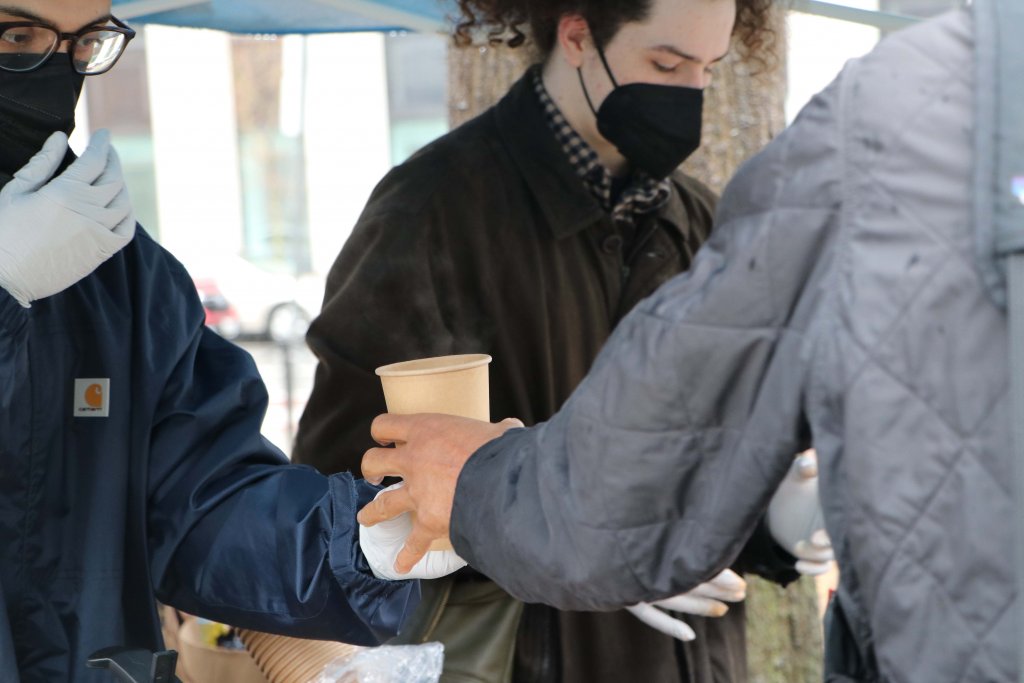
A volunteer hands someone a hot drink. Volunteers are instructed to wear masks and gloves when they serve food. (Lindsey Byman/MNS)

A volunteer scoops spaghetti into a plastic container. This week’s menu also included chili, fresh fruits and vegetables and brownies. (Lindsey Byman/MNS)

Stacked containers of food sit on a plastic folding table. Food Not Bombs aims to reduce food waste by giving out items that would otherwise have been thrown away. (Lindsey Byman/MNS)
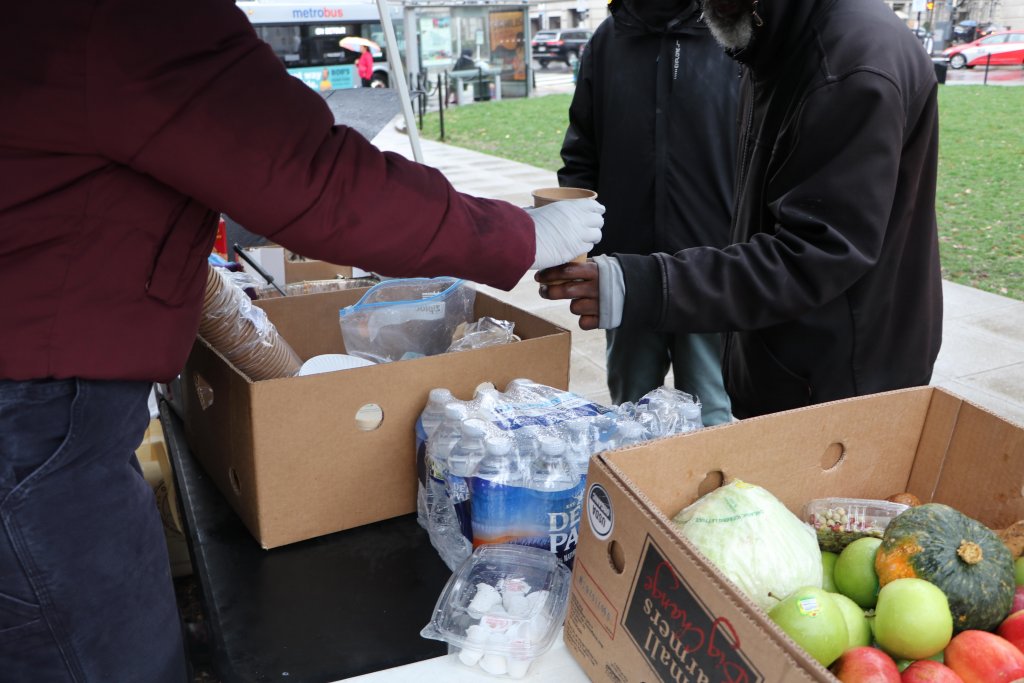
A volunteer hands someone a hot beverage over the table. Many volunteers knew the people they served by name. (Lindsey Byman/MNS)
Supreme Court takes up the case involving a BMW, a robbery and blown deadlines
WASHINGTON – When is it too late for the government to provide notice that they are seeking forfeiture in criminal cases? That was the question at the heart of a Supreme Court hearing on Tuesday.
The case arose after a federal jury in New York convicted Louis McIntosh in 2013 for violating multiple robbery and firearm offenses. A federal district court ordered him to forfeit $75,000 and a BMW he purchased with robbery funds.
At the sentencing, the government was instructed to submit a written order within a week, as per the Federal Rules of Criminal Procedure. The government failed to meet that time frame, instead submitting the order three years later for the money and car.
McIntosh sued and the case made its way to the Supreme Court, where the justices had a chance to revisit some of what they handled in their previous appointments to the bench.
“When a preliminary order of [criminal] forfeiture is not entered as it should be prior to sentencing, then the government loses its right to forfeiture,” McIntosh’s attorney, Steven Yurowitz, argued.
Several justices seemed skeptical that the time limits in the criminal code were mandatory.
Referencing her experience as a district judge, Justice Sonia Sotomayor noted that courts are usually flexible. “They set a fixed deadline. Something you can know and meet without discretion being involved.”
The Supreme Court has a precedent to rely on: In Dolan v. United States, the high court decided that a restitution order was valid despite it being submitted after the 90-day deadline as spelled out in the Mandatory Victims Restitution Act.
That case “recognized what I’ll call a ‘better late than never’ rule in complying with congressional directives,” Justice Neil Gorsch said.
In that decision, made in 2010, the Supreme Court outlined three types of deadlines: “jurisdictional rules” which are strict and can’t be overlooked; “claims processing rules,” which regulate timing but can be waived; and “time-related directives” intended to keep cases timely but are not absolute.
Justice Ketanji Brown Jackson asked whether the latest case had a deeper procedural error that needed a high court ruling. She pressed Yurowitz on whether a missed jurisdictional deadline should face consequences. He replied that a defendant is subject to sentence even though the government missed its deadline.
Chief Justice John Roberts raised hypotheticals about forfeiture timelines that a defendant could face in their sentencing.
“In this case there was no order entered until three years after,” Yurowitz responded. “Forfeiture is an element of sentencing and there’s an element of finality to it.”
Assistant to the Solicitor General Matthew Guarnieri argued that both the U.S. Appeals Court for the Second Circuit and federal district court offered the defendant notice of the forfeiture, and he had the opportunity to contest it before the sentencing process.
“The second circuit itself established that there was no prejudice to the defendant here,” Guarnieri said.
The justices asked whether they may violate the claim processing rule they set forth.
“I don’t think the court needs to address it,” Guarnieri said. “In general, the rule here contemplates that the court will announce the forfeiture as part of imposing sentence on the defendant and if the court purports to act after sentencing… then we have a harder set of issues.”
A decision in the case is expected to be issued by June.
Photos: Martin Luther King Jr. peace walk commemorates a legacy of equality and justice
WASHINGTON- Attendees in Washington D.C. celebrated Dr. Martin Luther King Jr. on Monday with a fervent peace rally followed by a parade that echoed the principles of equality and justice that the civil rights figure championed.
The heart of the commemoration lay in the annual Martin Luther King Jr. Memorial Peace Walk, held on the federal MLK holiday, which drew “peace walkers” from diverse backgrounds, all united in the pursuit of peace.
Organized by the Coalition for Peace, a group of individuals and nonprofits dedicated to fostering peace and positivity within Washington D.C. metropolitan communities, the Peace Walk has become a symbol of unity and a call for social change.
“It’s a beautiful day today,” said DeJuan Mason, the MLK Peace Walk co-chair. “This celebration involves being an active part of this event, giving back, and amplifying voices.”
The Peace Walk commenced with chants, “No freedom, no peace!” The powerful slogan echoed across Martin Luther King Junior Avenue, in earshot of those who still struggle for equality and transforming the Peace Walk into a moving tribute and a collective call for action.
This year, a distinctive element was added to the event. Participants who had tragically lost loved ones to gun violence carried signs with photographs of their departed family members. As they walked in solidarity, the signs sent a powerful message: “Stop the violence.”
“This year, our focus is on stopping violence, seeking justice, and empowering youth to speak truth to power,” Mason said. “We have a community that loves one another and comes together, embodying Dr. King’s dream right here.
Here are images from the march:
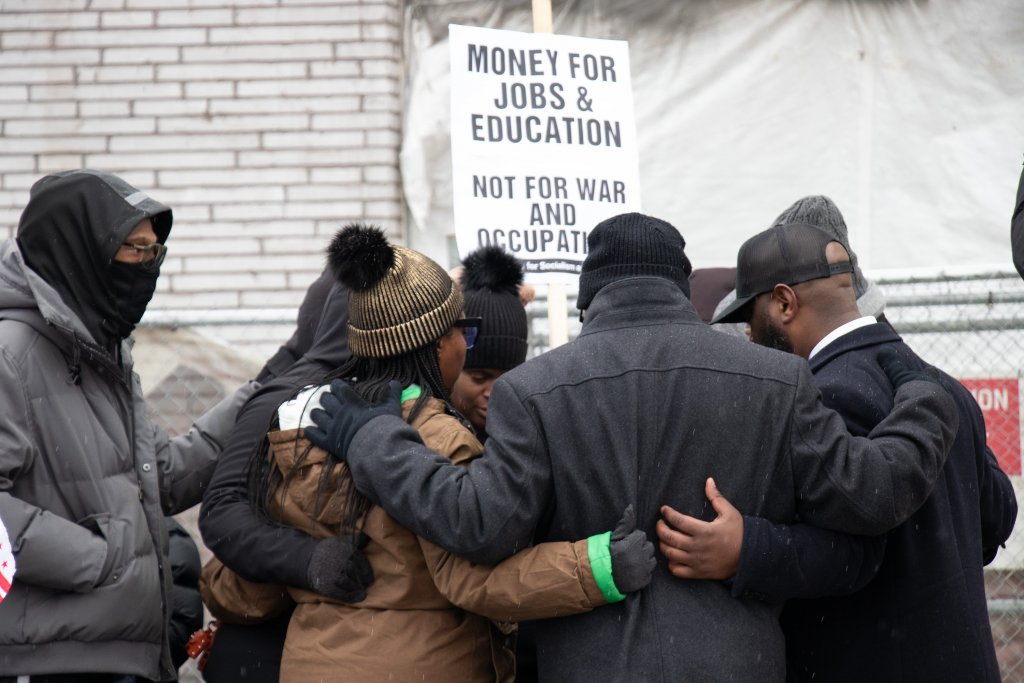
Peace Walk participants honor Dr. King’s legacy. (Rafaela Jinich/MNS)
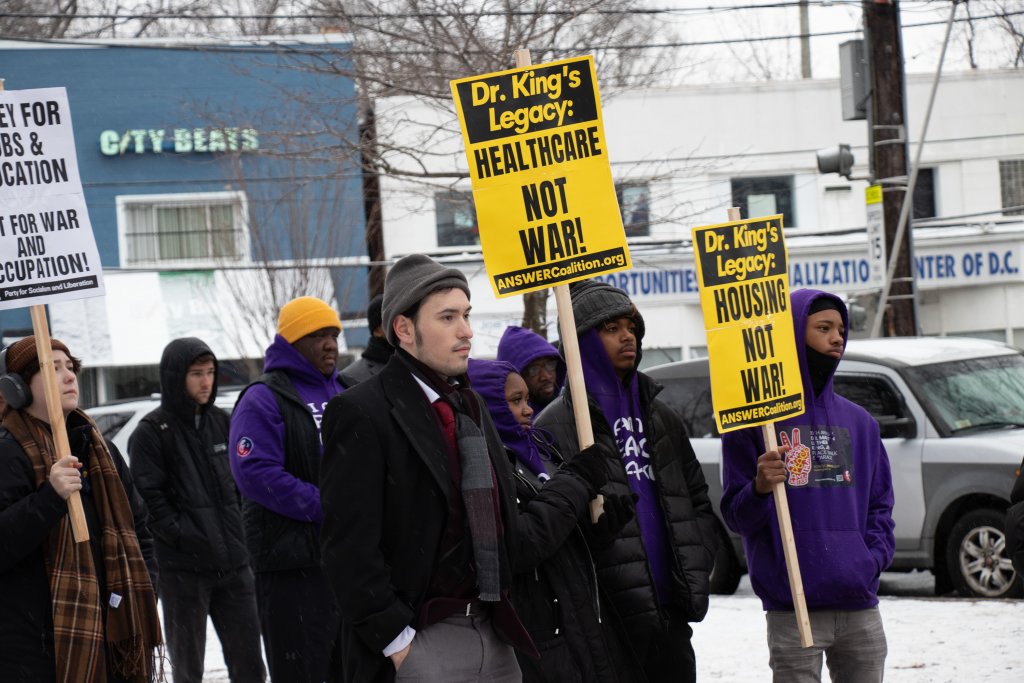
(Rafaela Jinich/MNS)
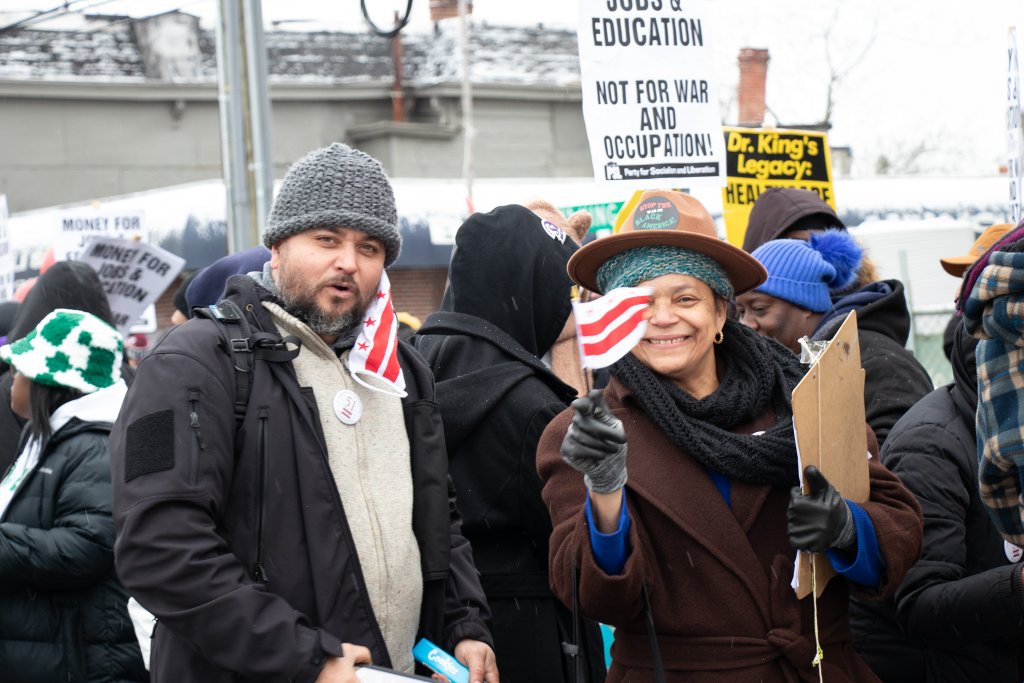
(Rafaela Jinich/MNS)
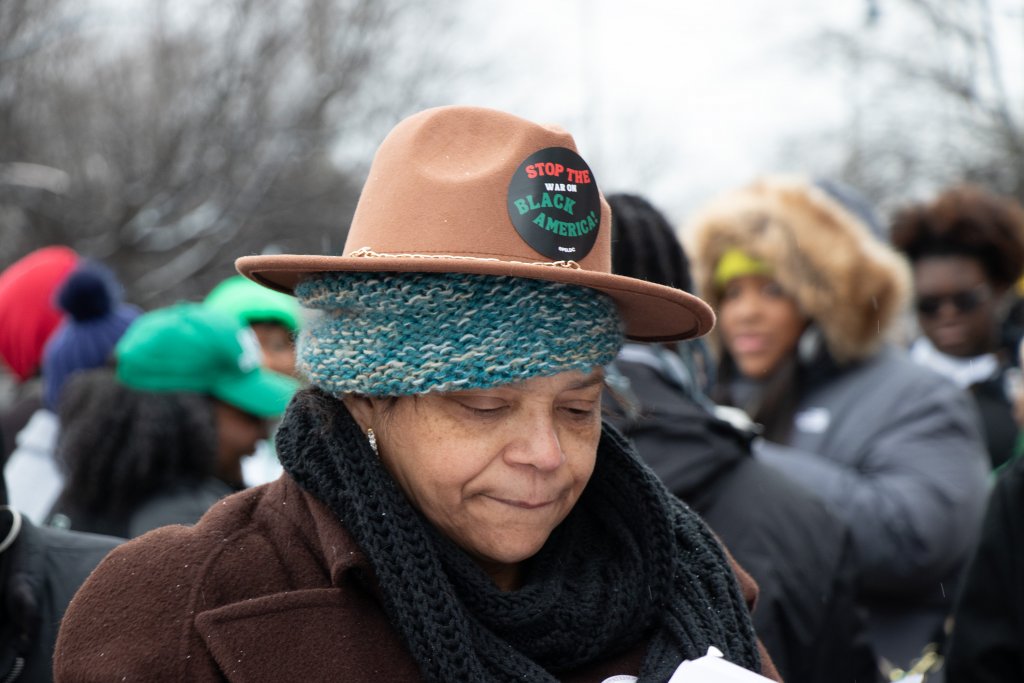
Peace Walk participant with a hat that reads “Stop the War on Black America!” (Rafaela Jinich/MNS)
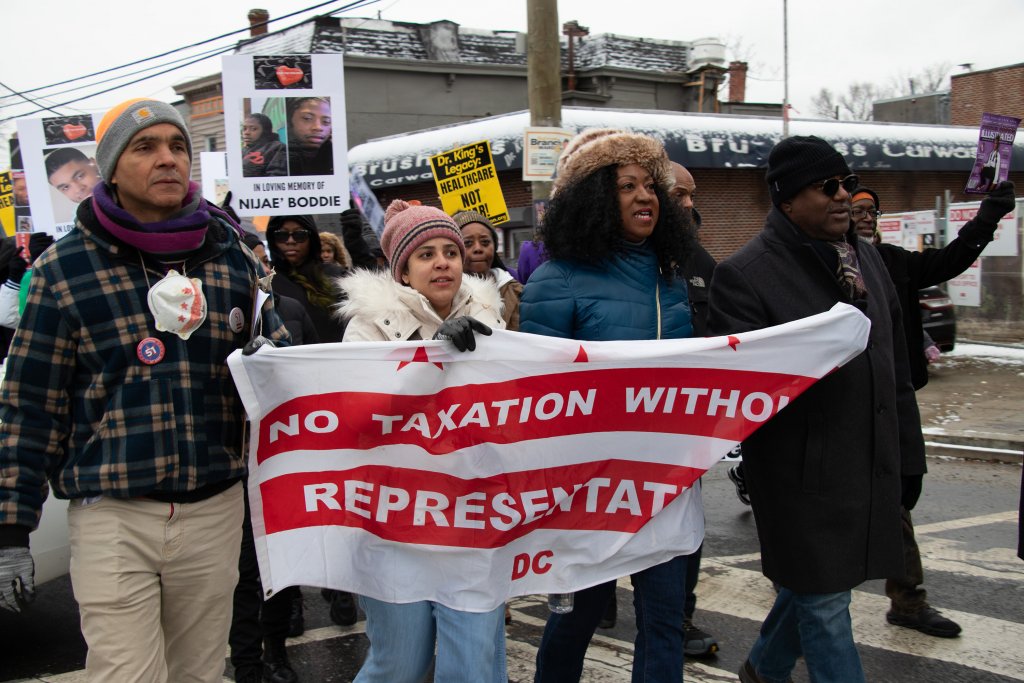
(Rafaela Jinich/MNS)
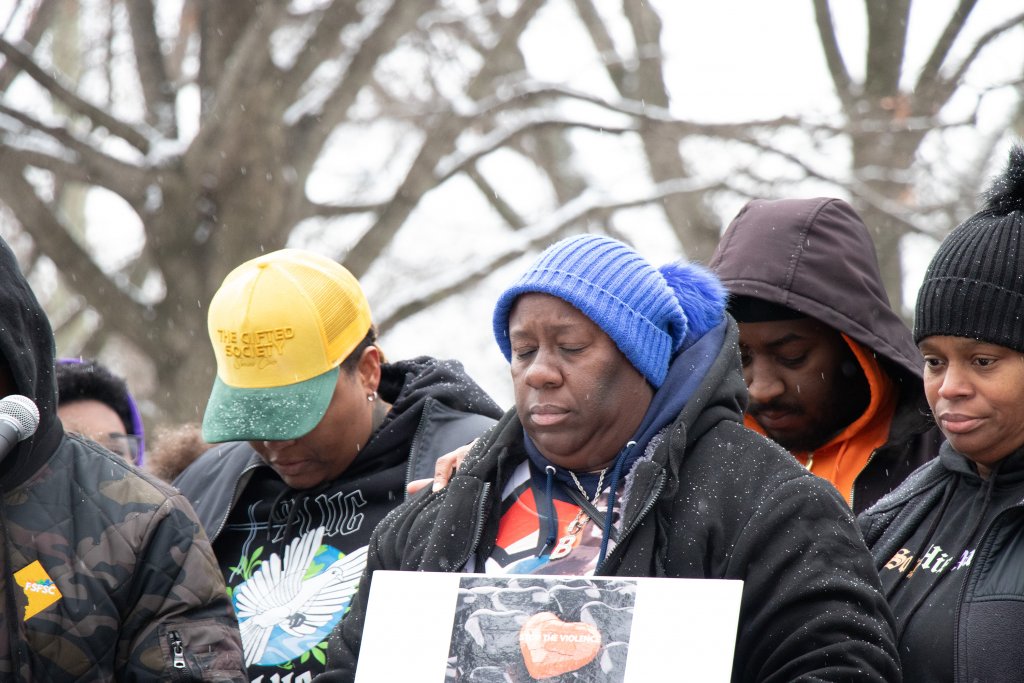
Families affected by gun violence in America come together for a moment of silence to honor their departed relatives. (Rafaela Jinich/MNS)
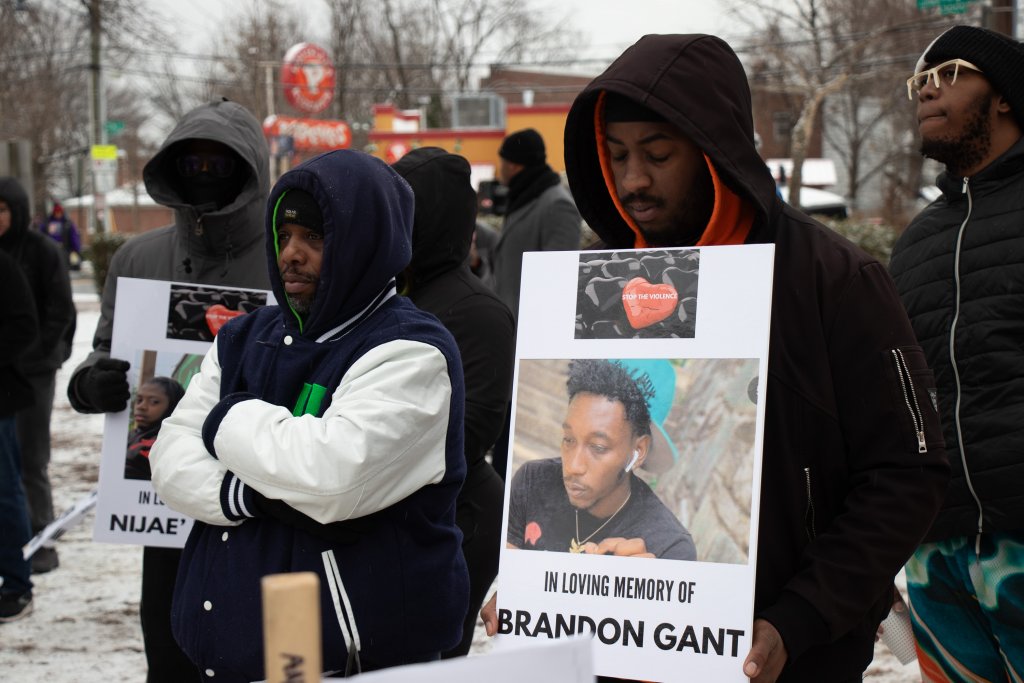
(Rafaela Jinich/MNS)
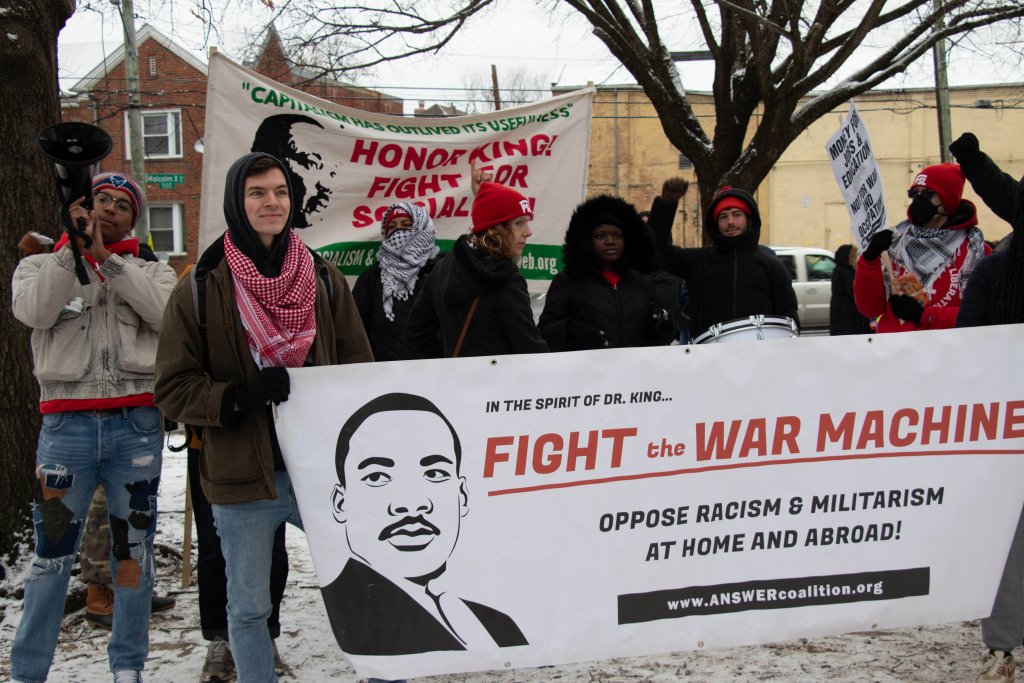
Peace Walk participants honor Dr. King’s legacy. (Rafaela Jinich/MNS)
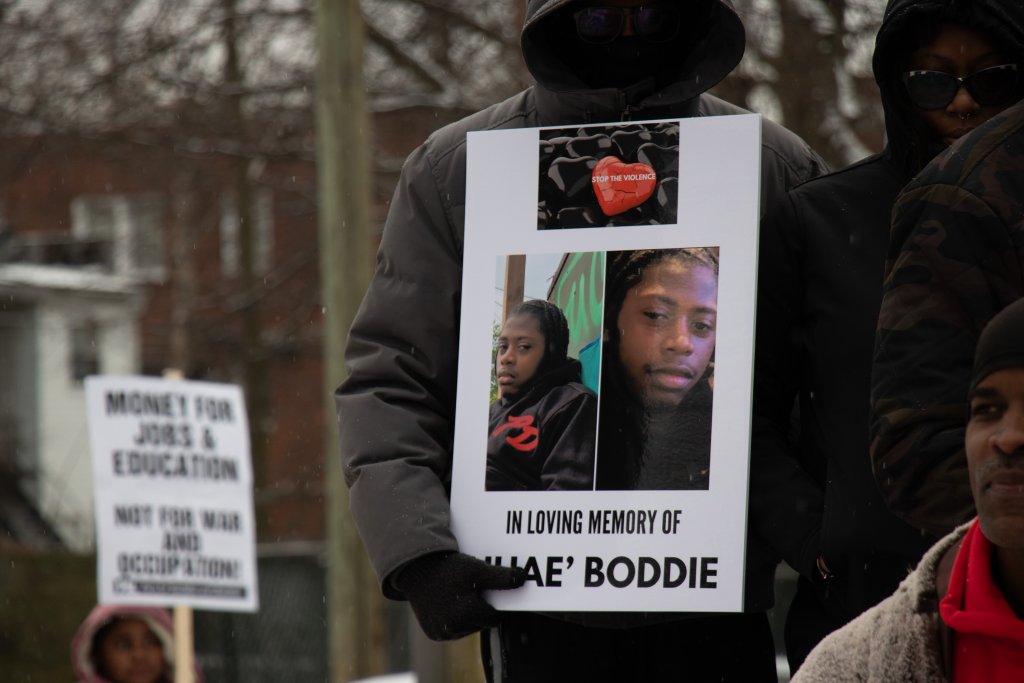
(Rafaela Jinich/MNS)
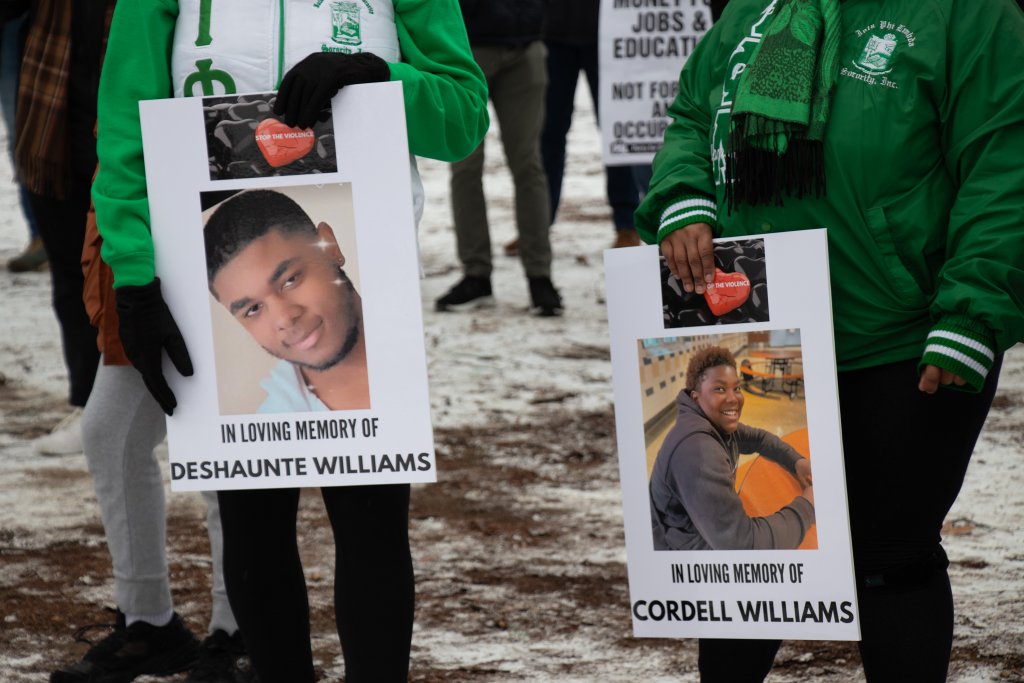
(Rafaela Jinich/MNS)
Chicago gun violence activists ask Congress to follow suit in community health reforms
WASHINGTON – Chicago-area medical experts and community health advocates brought their advocacy to Washington on Tuesday at a Senate panel on gun violence led by Sen. Dick Durbin (D-Ill.).
To local community leaders, gun violence is personal. Illinois has the 12th-highest rate of gun homicides and gun assaults in the U.S., and it had an above-average increase in gun suicide and homicide rates from 2012 to 2021. Chicago community advocates and physicians are also some of those who have taken the most action.
“There are proactive ways we can respond to get in front of the problem,” said Franklin Cosey-Gay, director of the University of Chicago Violence Recovery Program and public health professional.
Cosey-Gay shared with lawmakers his experience in treating a 12-year-old patient with a gunshot wound. The response did not merely involve the medical care involved with taking out the bullet and sending him home to heal. Rather, his team included child life specialists, social workers and mental health counselors.
The team members identified the patient as being at high risk for potentially being shot again. So, they worked on transferring the patient and his family to a transitional housing shelter and offering continued assistance such as visits from trauma intervention specialists, emergency transportation and referrals to community-based activities, he explained.
The Violence Recovery Program has worked with over 9,000 patients since 2018, 85% of whom were Black and 70% of whom were gunshot wound victims. Witnesses also said it was important to recognize that gun homicides in Chicago and across the country disproportionately harm Black Americans, therefore requiring community-based organizations to supplement medical care and work on preventing future violence.
“When it comes to addressing issues connected to trauma, you have to really understand the role of trust,” Cosey-Gay said. “Having individuals that understand that life is an important first step.”
Experts described other innovative approaches to gun violence that can serve as a model for broader congressional action.
Vaughn Bryant serves as the executive director of the Metropolitan Peace Initiatives, a network of community-based organizations in Chicago neighborhoods hardest hit by gun violence. He explained to lawmakers the positive ripple effect trauma-informed care can have on communities.
“If we can get to those people and help heal those people, then they’re going to be not only better for their communities but better for their families,” said Bryant. Metropolitan Peace Initiatives offers victim services such as mental health support, transitional employment and safety planning. It also targets at-risk individuals through community-based interventions such as negotiating non-aggression agreements to combat street violence and hosting recreational events in parks.
Many doctors and medical students donned their white coats and attended Tuesday’s hearing to demonstrate how they are working on the front lines.
“The white coats that are represented in the audience here are men and women who have given their life to medicine and have to face the products of these violent actions and try to keep these poor people alive for another day,” Durbin said.
Physicians in Illinois also tuned in, including Dr. Deanna Behrens, a pediatric critical care physician at Advocate Children’s Hospital in Park Ridge.
“I have seen kids who have been injured by guns in every way possible. Kids who were accidentally shot by siblings, a three-year-old child who shot himself in the head – because we know that kids two to three and up have the strength to pull a trigger – kids or adolescents who tried to harm themselves,” she said.
Firearms are the leading cause of death among children and teens in Illinois, and Behrens herself has witnessed the toll gun violence has taken on young people.
In-hospital interventions are crucial, she said, as is the work of community partners. But further legislative action – both at the state and national level – is needed, Behrens said.
“Normalizing the fact that gun violence is a public health epidemic and destigmatizing talking about guns is a way for us as a society to invest in decreasing the burden of gun violence on children,” said Behrens, who serves as the chair of the Gun Violence Prevention legislative committee for the Illinois chapter of the American Academy of Pediatrics.
She called on lawmakers to implement similar approaches Washington has taken to address other public health problems in the past, such as automobile accidents and deaths from smoking. This involves greater data-sharing efforts across hospitals, such as those implemented by Durbin’s Chicago Hospital Engagement, Action and Leadership, or HEAL, initiative, she said.
“It is not unusual for my colleagues on the other side of the table to talk in negative terms about that city,” said Durbin. “I’m honored to represent it.”
Behrens said that while her group’s advocacy efforts have been successful at passing an assault weapons ban and safe storage rules within Illinois, other states must follow suit. Over half of the guns used in Illinois crime are from other states that have looser restrictions.
“This is not something that has happened overnight, it is something that’s been going on for decades,” she said.
As gun violence soars, lawmakers, experts debate how best Congress can address the crisis
WASHINGTON – Doctors and medical experts on Tuesday called on lawmakers to take a public health approach to the gun violence epidemic they say is plaguing the United States.
Since 2020, guns have become the number one cause of death for children and teenagers, according to a study released earlier this year. In 2022, about 132 people died from a firearm-related injury each day. That’s more than the deaths for children caused by cancer or vehicle accidents.
A public health approach to the crisis would create multiple solutions to simultaneously attack the problem, said Dr. Megan L. Ranney, who is a practicing emergency physician and dean for the Yale School of Public Health. The approach involves gathering data on the problem to see who is most affected; defining risk and protective factors; and creating programs that would change existing patterns to avert injury, hospitalization or death.
“I have had a front row seat to our nation’s growing firearm injury epidemic, [and] I have worked to define and implement the public health approach to this crisis,” Ranney said at a Senate Judiciary Committee hearing. “We have example after example of how this four-step approach, when applied systematically, can improve human health without abrogating rights.”
Ranney said that community violence intervention (CVI) programs should be considered an important part of the solution. CVI programs use approaches like putting in place “violence interrupters” and case managers to prevent gun violence.
Vaughn Bryant, executive director of the Metropolitan Peace Initiatives, a CVI program based in Chicago, said his program has produced real results. Metropolitan Peace Initiatives coordinates a cross-agency effort among community outreach and engagement organizations with the goal of reducing gun violence in the city’s highest-risk neighborhoods.
Bryant called on Congress to provide federal support and funding to CVI programs like his own.
“It has a national impact,” Bryant said. “Giving a resource allocation can create standards of practice across the country that are important for this work.”
Other organizations working to prevent gun violence agreed.
“Community violence intervention programs in general are a great proactive approach, in a lot of places across the country and in a lot of different communities, to address the crisis,” Zeenat Yahya, policy director at March for Our Lives said in an interview with the Medill News Service.
Both sides of the aisle were divided on whether or not gun violence should be considered a public health crisis.
Sen. Dick Durbin (D-Ill.) said CVI programs are important in interrupting acts of violence before they happen. He said creating more of these programs could help build on the Bipartisan Safer Communities Act, an initiative passed last year that invests in mental health funding and violence prevention initiatives.
“Surely we can find some common ground between parties to create real change for the American people when it comes to this public health crisis of gun violence,” the chairman said.
But Amy Swearer, senior legal fellow at the conservative Heritage Foundation, was critical of the framing of the gun violence crisis as an epidemic. She argued that “using the public health lens hasn’t changed the discussion.”
Swearer, along with Republican lawmakers, continued to emphasize the constitutional right to bear arms.
“The Second Amendment in the Bill of Rights is not a public health crisis,” Sen. Ted Cruz (R-Texas) said.
The sharply divided Congress is unlikely to take up new legislation, especially in an election year, but both parties agreed that mental health initiatives and reducing homicides should be priorities.
“I hope we look at the entire picture of gun violence, which includes focusing on repetitive acts of violence by a small percentage of our communities, focusing on mental health diagnosis and treatment, and finding ways that we can address gun violence like we did in the Bipartisan Safer Communities Act,” said Sen. John Cornyn (R-Texas).
Medical experts emphasized that bipartisan efforts are crucial to effectively combating the gun violence crisis.
“Help our country have hope by demonstrating collaborative action as we have done before,” Ranney said. “We have shown we can reduce the risk of a shooting long before semantics of the gun with intent to harm. Through your bipartisan commitment to this public health approach. Our country can reduce firearm injury and death.”
Auto safety regulators on track to recall 52 million airbag inflators
WASHINGTON — The National Highway Traffic Safety Administration divulged details of its investigation into defective airbag inflators, manufactured by ARC Automotive and Delphi Automotive. The agency seeks to recall 52 million airbag inflators — one of the largest automobile callbacks in recent history.
Thursday’s meeting, which was open to the public, was cited as a “rare move” by the agency. The NHTSA first announced the recall last month.
Most automotive companies choose to comply with voluntary recalls issued by NHTSA. But when NHTSA called for one in May, ARC Automotive refused to comply. On Sep. 5, the agency struck down an initial decision to recall ARC Automotive’s airbag inflators — a step toward an official recall.
According to federal auto safety regulators, the airbags were prone to rupturing, which could cause metal fragments to hurl at passengers. So far, the airbags have injured seven people and killed one person. The airbag inflators were incorporated into vehicles made by 12 carmakers, including Ford, General Motors and Hyundai.
“Airbags have saved approximately 50,000 lives in the last 30 years,” said Cem Hatipoglu, NHTSA’s Acting Associate Administrator for Enforcement. “However, airbags that failed to perform appropriately are also a serious safety problem.”
Based on the NHTSA’s investigation, debris left in the inflator during the manufacturing process can loosen. During a deployment, large debris blocks airflow out of the inflator, which can cause the rupture.
“This issue doesn’t only render the airbag ineffective of doing its job of saving lives,” Hatipoglu said. “It also turns the airbag itself into a device that can cause serious injury.”
Donna Glassbrenner, a mathematical statistician at the National Center for Statistics and Analysis, said the agency can reasonably assume that ruptures will continue, based on available information. One out of 370,000 future airbag deployments is likely to result in a rupture, she said.
“While there is always uncertainty in predictions, using available data allows the agency to make the best possible decisions in the face of that unavoidable uncertainty,” Glassbrenner said.
Any one of ARC Automotive’s 52 million inflators presents a risk, so a complete recall is needed, said Sharon Yukevich, Division Chief of the NHTSA’s Office of Defects Investigation.
Stephen Gold, who represented ARC Automotive, pushed back on the NHTSA’s characterization of the airbag inflators. He described the seven ruptures as “isolated incidents,” rather than a “systemic defect.”
“Setting a low threshold for establishing a safety effect is simply unprecedented in the history of NHTSA,” Gold said.
The meeting presented a chance for victims of ruptured airbags to share their stories.
In August 2021, Jacob Tarvis lost his mother when her vehicle’s airbag inflator ruptured in a car collision. Following her death, Tarvis, who was then 22, was appointed guardian of all six of his siblings, as the family struggled to process their grief. He hopes no one else has to experience what his family has, he said.
“How many others have suffered or will suffer?” Tarvis said. “More moms don’t need to die. More kids don’t have to be raised by their siblings.”
Kevin Fitzgerald represented Recall Awareness, an organization that advocated for the ongoing recall of Takada airbags. He expressed frustration at ARC Automotive’s refusal to comply with the recall.
“Our loved ones are not statistics,” Fitzgerald said. “ARC, Delphi — hear me now, your refusal to act is not just corporate negligence, it is a moral failing of the highest order. We can’t afford to let history repeat itself.”
The public can file written submissions until Dec. 4, which NHTSA will take into consideration as to whether to order an official recall.
Sanders accuses Starbucks of ‘most aggressive and illegal union-busting campaign’ in US history
WASHINGTON – Senator Bernie Sanders (I-Vt.) accused Starbucks CEO Howard Shultz of waging the “most aggressive and illegal union-busting campaign in the modern history of our country,” on Wednesday at a hearing held by the Committee on Health, Education, Labor, and Pensions.
Schultz, who initially refused to testify before the committee until the threat of a subpoena forced his eventual appearance, emphatically denied any unlawful interference with unionization efforts under his leadership.
Sanders, chair of the Committee, has long criticized Schultz as anti-union and has accused the company of impeding multiple attempts at unionization.
“Think about a multi-billion dollar company with unlimited resources, with all kinds of lawyers, advisors, and consultants, and yet they have not signed one contract with any of them, nearly 300 unionized shops,” Sanders said.
Schultz, who referred to his employees as partners throughout the hearing, highlighted his vision for the coffee business as being oriented in the state of “humanity, respect, and shared success” and stated his appreciation for all partners regardless of whether they want to join a union. “We are a different kind of public company that balances profitability with a social conscience,” he said. Notwithstanding the National Labor Relations Board’s conclusion that Starbucks’ approach was unlawful, he strongly maintained his conviction that the company “did not break the law.”
Ranking member Senator Bill Cassidy (R-La.), who claimed he had not come to defend Starbucks, questioned the hearing’s title, calling it “a smear campaign against an individual and company” that is not founded on facts.
A number of GOP committee members rallied around Starbucks, arguing that the company was being unfairly targeted and that the criticism of its union-busting practices amounted to an attack on capitalism and the American dream.
“You’re being grilled by people who have never had the opportunity to create a single job,” Senator Mitt Romney (R-Utah) said, channeling the same sentiments about the target of successful businesses.
According to Sander’s staff report, the NLRB has filed over 80 complaints against Starbucks for breaking federal labor law, and over 500 unfair labor practice accusations have been lodged against the company.
Schultz maintained that the business had not broken the law and is merely abiding by the regulations established by Congress.
Sen. Cassidy further cautioned the committee to acknowledge the NLRB’s own credibility problems, citing the “weaponization of the agency against American employers” and the fact that it benefits “politically connected labor organizations.” He refers to four different accusations of NLRB employee interference that are currently before the Board, three of which involved Starbucks as the employer.

